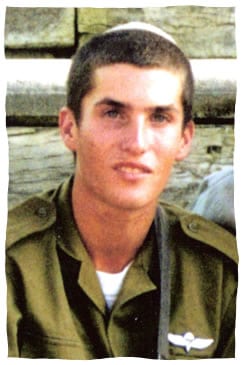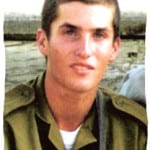A tribute to Noam Apter, Hy”d, killed in a Friday night terror attack in the Otniel Yeshiva.
Translated by Netzach Sapir
Daybreak – morning’s first rays peek over the horizon, the air crisp and clean, the excitement of a fresh start. According to Halakha, the day opens with netilat yadayim, ritual hand washing performed by pouring water on each hand alternately. The source of this ritual is the sanctification of the kohanim in the Beit HaMikdash (Holy Temple). A contemplation of the priestly ritual can lend meaning to our daily lives.
Every morning the kohanim washed their hands and feet in the sink of the Beit HaMikdash before beginning their temple service (Shmot 40:30-32). In the language of the Torah this action is referred to as “washing,” but in Rabbinic literature it is called “sanctification of the hands and feet” (Mishnah Tamid 1:4). This difference is highly significant; We could understand “washing” to mean something negative – the removal of dirt or impurity, but the rabbinic term “sanctification” has a positive, constructive connotation.
What is the significance of the daily sanctification of the kohanim? When Aaron and his sons were consecrated to the priesthood they immersed their bodies in water, donned the priestly garments, and were anointed with oil (Shmot 40:12-15). Every morning thereafter, the kohanim reenacted the three aspects of the original sanctification ceremony before beginning their service – immersion, being attired in priestly garb, and sanctification with the water of the sink. The hand washing was so crucial that a kohen who entered Hashem’s sanctuary without washing his hands is punished with death, as though he were a zar, a non-kohen, entering the sanctuary.
God appoints Aaron and his sons to be Kohanim for life, and not only that, but the Torah makes clear that the role passes on to their offspring for all time (Shmot 40:14). If it is an eternal status which one is born into, why did the kohanim need to be re-sanctified every day anew before beginning their temple service?
The answer is tied to the perception that every single day is a new creation. In the prayer with which we open the day, “modeh ani,” we thank God for returning our soul to us as if we are receiving for the first time, as if were just born. The outlook in which we start every day as a new creation enables us to see life and the world around us with fresh eyes.
The biggest danger in life is forgetting what really matters, and the challenge is to live with an constant awareness of that which is really important. Netilat yadayim, which is repeated every morning and reminds us every day of our purpose in life, can help us live with an awareness of who we are and why we are here.
There are several sources for the expansion of the daily netilat yadayim from a priestly ritual to a mitzvah which applies to every Jewish man and woman. In the words of the Code of Jewish Law, Kitzur Shulchan Aruch:
When a person rises from their bed in the morning to carry out the service of his creator he is like a new creation. Therefore he must first sanctify himself and wash his hands from a vessel, like a priest who would sanctify his hands from the sink every day before beginning his service. (Kitzur Shulchan Aruch 2:1)
The people of Israel are called a “kingdom of priests and a holy nation” (Shmot 19:6), but unlike the descendants of Aaron, the priesthood of Am Yisrael is dependant not on heritage but on the fulfillment of their role, the keeping of their covenant with God (Ibid 5). If every person is like a priest, than the whole world is like the Temple. When we wash our hands in the morning, it reminds us that we have a purpose and a mission in the world, a purpose and a mission for this day.
Noam’s Hands and Feet
I once asked my students why they thought we are commanded to sanctify our hands and feet in particular, out of all the limbs in the body? Noam Apter, one of my students, answered that the source of the mitzvah comes the verse, “when they go to the tent of meeting…and when they approach the alter to serve” (Shmot 30:20). In order to come to the place of holiness, you use your feet and in order to serve once you get there, you need to use you hands. Therefore we sanctify our hands and our feet. Noam continued to explain that his idea applies to life in general: A person must use his feet in order to bring himself to the right place, and then use his hands in order to do the right thing once he gets there.
In this insight, Noam was really describing his own way of life. He was a person whose learning and life were inseparable from the sanctification of his hands and feet, constantly engaged in action and always willing to take the first step. In his short life, Noam managed to establish the Center for Jewish Awareness, an organization dedicated to spreading Judaism to places where it might not otherwise reach, for he understood that you can’t wait for every Jew to come into the Beit Midrash, you need to bring the Torah out to the people.
This attitude also characterized his death. In the winter of 5763, during Friday night dinner in Yeshivat Otniel while the students were singing and dancing in the dining hall, terrorists entered the kitchen and murdered the four students who were on kitchen duty – Noam Apter, Yehudah Bamberger, Gavriel Choter, and Tzvikah Ziman. When the shooting started, the door which separated between the kitchen and the dining hall, mere meters from the circle of dancing students, was suddenly shut and locked. This gave the students in the dining room time to take cover and return fire. When our forces broke into the kitchen, they found the bodies of Noam and his friends lying next to the locked door

